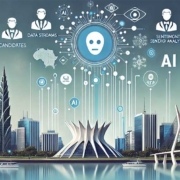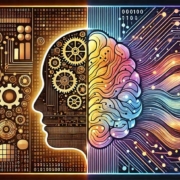The Enhanced Reflection of ChatGPT o1 and Human Thought: A New Perspective on Decision and Technology
Days ago, I listed HERE a series of characteristics of the o1 version of ChatGPT with the aim of drawing a parallel with the human decision-making process, especially as described by Daniel Kahneman in his book “Thinking, Fast and Slow“. However, I have now decided to write a more essay-like text on the subject.
Artificial intelligence (AI) is increasingly present in our daily lives, influencing everything from internet searches to virtual assistants on our devices. The latest evolution in this field is ChatGPT o1, an enhanced version of OpenAI’s language model, which stands out for “reflecting” more deeply before responding. This feature not only improves the quality of interactions but also allows us to draw interesting parallels with the human decision-making process, especially as described by Daniel Kahneman in his book “Thinking, Fast and Slow”.
Kahneman, awarded the Nobel Prize in Economics, explores how our mind operates through two systems: System 1, which is fast, automatic, and intuitive, and System 2, which is slower, deliberative, and analytical. While System 1 allows us to react instantly to stimuli, it is in System 2 that deep reflection occurs, essential for complex and rational decisions.
ChatGPT o1 seems to incorporate this dynamic. By “reflecting” more before generating responses, the model is, in a certain way, engaging in a process similar to the human System 2. This results in more precise, contextualized, and useful answers, avoiding pitfalls that previous models, operating more automatically, could face.
This comparison raises important questions about how we interact with technology and how AI can be designed to complement our cognitive processes. If AI models can be developed to reflect more deeply, they can assist in making complex decisions, offering more balanced analyses and mitigating common biases.
However, it is crucial to recognize the fundamental differences between human thought and computational processing. While our mind is influenced by emotions, personal experiences, and social contexts, AI operates based on algorithms and data patterns. Therefore, although ChatGPT o1 can simulate a process of reflection, it does not possess consciousness or genuine understanding.
This distinction does not diminish the potential of AI but highlights the importance of using it as a tool that complements, not replaces, human judgment. Models like ChatGPT o1 can help us see beyond our own biases, offering additional perspectives and relevant information that enrich our ability to make informed decisions.
Moreover, the incorporation of more “reflective” processes in AI invites us to reconsider how we develop these technologies. The emphasis should not be only on speed and efficiency but also on the quality and depth of responses. This is particularly relevant in sensitive areas such as health, finance, and education, where informed decisions are crucial.
In summary, the advancement represented by ChatGPT o1 is a significant step in the evolution of artificial intelligence. By bringing machine processing closer to our own way of thinking, a world of possibilities opens up for collaboration between humans and AI. However, it is up to us to ensure that this technology is developed and used ethically, responsibly, and aligned with human values.
Reflection is not just a cognitive function but also an invitation to critical awareness. Perhaps, by observing “reflection” in the machine, we may be inspired to deepen our own, recognizing that in an increasingly complex world, thinking slowly may be the key to better and wiser decisions.
Deoclécio Paiva de Castro
Ph.D student in Economics
M.Sc in Mathematical Optimization Modeling and Quantitative Methods
B.Sc in Industrial/Production Engineer







Leave a Reply
Want to join the discussion?Feel free to contribute!